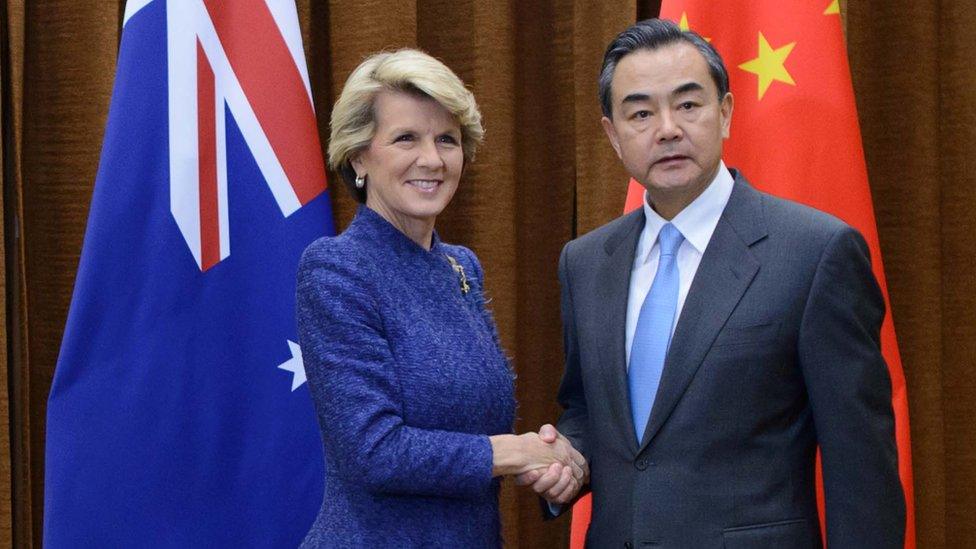Australia to boost defence spending
- Published

Australia will invest more than A$50b in 12 submarines to replace its ageing Collins Class fleet of six
Australia has announced a surge in defence spending, a move that reflects concern over military expansion in the region.
Military spending will grow by A$29.9b ($21.4b, £15.4b) over next 10 years, the 2016 Defence White Paper outlined.
The largest investment will be made in submarines, with investment also being made in additional naval vessels, fighter jets and personnel.
Under the plan defence spending will comprise 2% of Australia's GDP by 2021.
The report outlines the government's defence priorities to 2035.
Australia's Prime Minister Malcolm Turnbull said the threats faced by Australia were not limited to foreign conflicts, but also included terrorism, cyber-warfare and climate change.
"[This] is a plan to become more powerful on land and in the skies, and more commanding both on the seas and beneath them. It is a program to be more resilient in the cyberspace, to be more innovative with technology, and to have greater situational awareness thanks to our advanced intelligence capabilities," Mr Turnbull said.
It says that about 25% of the additional spending will be put towards the most "comprehensive regeneration of our Navy since the Second World War".
Construction of 12 "regionally superior" submarines at a cost of more than A$50b represents Australia's largest-ever defence procurement.
The submarines, which will have a "high degree of interoperability" with US forces, will begin to enter service from the early 2030s.
In addition to three Hobart class air warfare destroyers already scheduled to enter service in the early 2020s, nine new warfare frigates optimised for anti-submarine warfare will be built by the late 2020s.
The white paper also provides for an increase in personnel of around 2,500 to a total of 62,400 across the Australian Defence Force.
The purchase of unmanned drones, plus previously announced plans to buy seventy-two Joint Strike Fighters and 12 Growler electronic warfare aircraft, were also outlined in the paper.
The China question
The white paper identified three strategic defence interests for Australia: securing Australia's northern borders and communication lines, ensuring security in its immediate region, and maintaining a "rules-based global order", particularly in the Indo-Pacific region.
It reaffirms Australia's commitment to the US but expresses ambivalence on China, calling on it to be "more transparent about its defence policies.
The paper also reiterates Australia's opposition to the reclamation of land in the South China Sea and urges ASEAN and China to agree on a code of conduct for the area as soon as possible.
Dr John Blaxland, a senior fellow at the Strategic and Defence Studies Centre at Australian National University, said the language on China was more robust than in the 2013 Defence White Paper.
China's economic muscle meant that it was more likely to ignore rules that didn't suit its interests, which was evident both in territorial disputes and in developments in the cyber domain, Dr Blaxland said.
"It's not that concerned about the rules, about a global order that it didn't write."
He said the government's defence plan was "not an unreasonable insurance policy" and would have a strong impact on capacity if implemented properly.
"The global average spend on defence is between 2.1% and 2.3% of GDP, depending on what measure you use, so Australia's plan to spend 2% is not unreasonable," he said.
- Published17 February 2016

- Published21 January 2015
